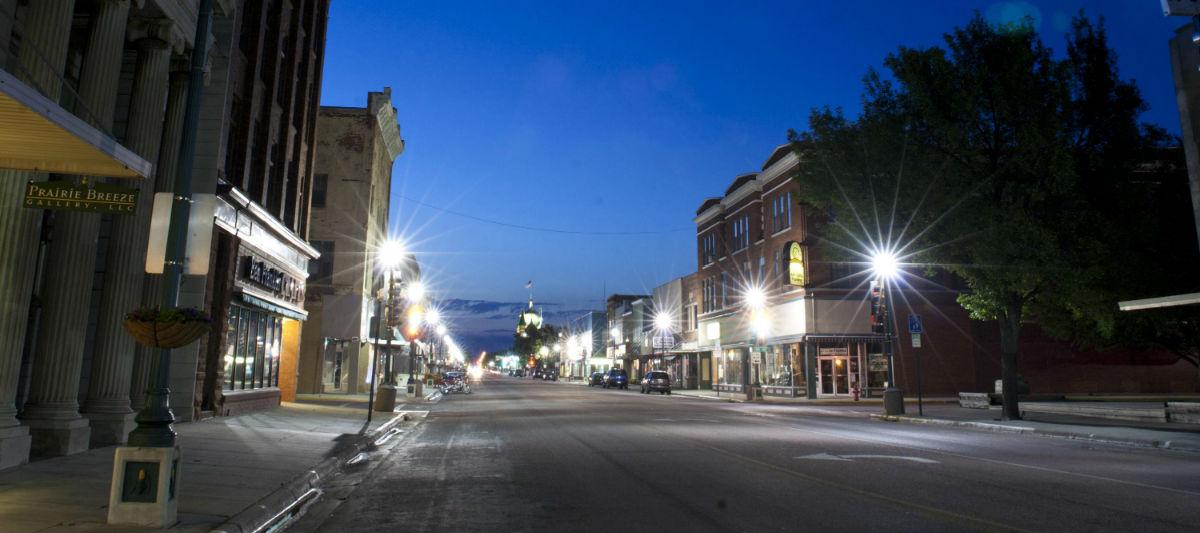American life has gone through many changes over the decades. We started as a society of farmers, self-sufficient people who did for ourselves in all areas of life. Over time, farming became more efficient and work more specialized still it wasn’t until the 1920 census that folks in cities outnumbered those who lived in rural areas.
Retail used to be a series of individual stand-alone shops. Even grocery stores were fragmented; the milkman brought dairy to your door, you went to the butcher shop for your meat and to the green grocer for your produce. The department store was one of the first major innovations in retail, put “everything” under one roof; clothing, dry goods, appliances, shoes etc. in one store in various “departments”. The rise of Woolworth’s, JC Penney’s, Sears and other chain stores threatened the Mom and Pop shops of the day. Large grocery stores like the A&P were the department stores of grocery leading to the demise of independent butchers and dairy deliveries etc.
Main Streets were the anchor of a town’s life. Retail stores, barbershops, professional offices, bars and restaurants all lined the burg’s main thoroughfare. It was the center of a community’s existence. Then in 1956 in Edina, Minnesota the first commercial mall was constructed. I was at the dedication of the Van Arsdell’s mall in West Saint Paul in 1964 because television’s The Lone Ranger (Clayton Moore) was there in full costume for the dedication and I was a big fan of The Lone Ranger. The first malls were basically open-air strip malls. Later they became the enclosed behemoths with movie theaters and other entertainments like the Mall of America and Main Street America suffered.
Now we have the rise of the Internet and juggernauts like Amazon. In 2019, 9,300 stores closed and in 2020 another 12,000 retail outlets shut their doors. It is estimated that another 80,000 establishments, 9% of the US total, will also close within the next five years. More than 60 major retailers have already filed for bankruptcy including Sears, Kmart, Shopko, Pier 1, and Toys R Us etc. About half of all remaining mall based stores will close by the end of 2021 according to research conducted by Green Street Advisors.
The death of malls has been caused by the pandemic, economic hardship, the shrinking of the middle class, the rise of on-line retailing and the growth of what are known as low income retailers like dollar stores and outlets like TJ Maxx. In one sense Main Street might be forgiven for reveling in the troubles that malls are experiencing except that many of the challenges malls face confront Main Street as well.
Mitchell’s Main Street has several challenges. The first is the age of the buildings as well as the cost of upgrading and maintaining those buildings in this cutthroat competitive retail environment. The second is parking. There aren’t that many spots on Main Street and they involve parallel parking, not most drivers’ favorite activity. Next are the general challenges of the Internet, the proximity of Sioux Falls and the difficulty of getting in a range of styles and sizes with a geographically shrinking customer base to support large inventories.
Some local businesses have done an excellent job of providing a unique service, one that doesn’t lend itself to online competition – Ed’s Pet World and Charlie’s Shoe Repair come to mind. Others have a strong social media and online presence. There are things the City can do to help Main Street.
First, create a parking lot on Main Street for Main Street – the corner of 3rd and Main comes to mind. Second, if 3rd and Main isn’t to be a parking lot then it should be made into a tourist plaza. A series of permanent exhibits like a Conestoga wagon and horse statues that tourists could mount for pictures as well as a Native-American teepee and cultural informational plaques would draw people from the Corn Palace down Main Street helping to drum up traffic for those businesses. We could return more professional offices to Main Street, like the law firm Alvine and Weidenaar has done. Tax forgiveness and incentives for locating on Main Street and for refurbishing buildings would also be helpful. The City should consider denying new retail building permits until existing empty retail space throughout Mitchell is filled.
Change is inevitable but the words “change” and “progress” aren’t synonymous. Change often happens but the vast majority of the time change is not progress it is just different, not better. Main Street used to be a destination, not just a location. I hope we can return to those days of yesteryear when locals shopped local and on Main Street.


